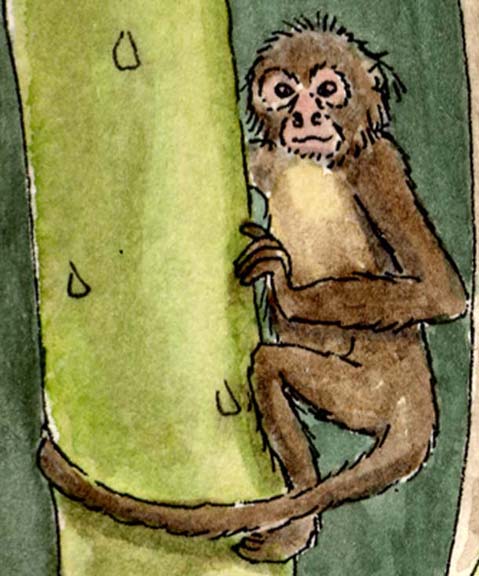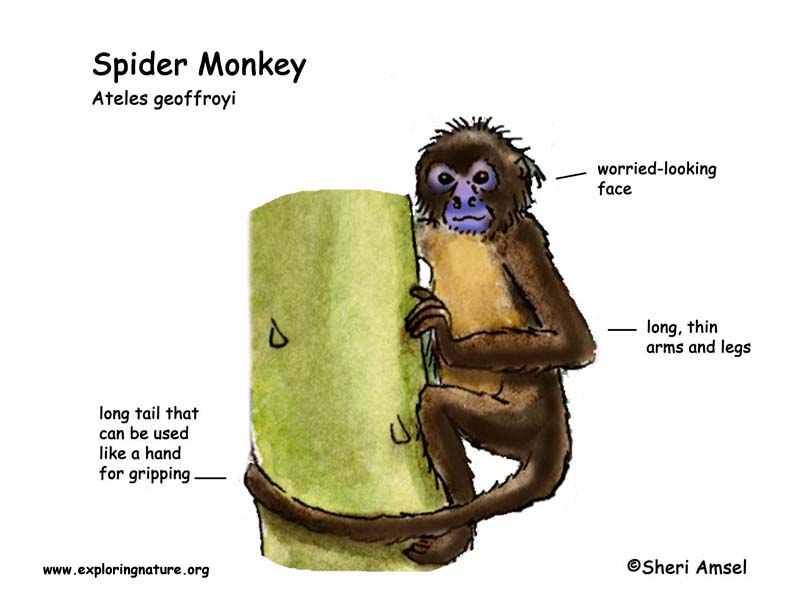

They are found from Mexico south to Brazil.
They live in the rainforest.
They have a small, rounded belly and a worried faced. They have thin arms, long, thin legs and a very long tail. They have a tail that can grasp like a hand (prehensile) and carry the weight of their whole body for a long time. They weigh about 20 pounds.
They live in trees (arboreal), sometimes 100 feet above the ground. They don't come to the ground very often, but they can walk on 2 feet. They are active during the day (diurnal).
They eat fruit, nuts, seeds, leaves and even insects or small animals.
They are eaten by birds of prey, snakes, ocelots, and jaguars.
Females are pregnant for 7-8 months (gestation). Babies hold on to their mothers' belly and then travel on her back until independent.
They can live 20-27 years in the wild. They are listed as endangered.
Kingdom: Animalia
Phylum: Chordata
Subphylum: Vertebrata
Class: Mammalia
Order: Primates
Suborder: Haplorrhini
Family: Atelidae
Subfamily: Atelinae
Genus: Ateles
Species: Ateles geoffroyi
When you research information you must cite the reference. Citing for websites is different from citing from books, magazines and periodicals. The style of citing shown here is from the MLA Style Citations (Modern Language Association).
When citing a WEBSITE the general format is as follows.
Author Last Name, First Name(s). "Title: Subtitle of Part of Web Page, if appropriate." Title: Subtitle: Section of Page if appropriate. Sponsoring/Publishing Agency, If Given. Additional significant descriptive information. Date of Electronic Publication or other Date, such as Last Updated. Day Month Year of access < URL >.
Amsel, Sheri. "Monkey (Spider)" Exploring Nature Educational Resource ©2005-2024. December 13, 2024
< http://www.exploringnature.org/db/view/Monkey-Spider >

